Tibet is the place on the dream list for all those who love to travel. It is also a holy place in the minds of Buddhists. There are rolling snow-capped mountains, pure lakes like sapphires, sacred temples, and the world-famous Potala Palace. Are you looking for a good Tibet tour itinerary? Take a look at this 6-day classic Tibet tour. This tour starts from Lhasa and we will take you to Gyantse and Shigatse. At the end of the tour, you will depart from Lhasa Airport. In the well-arranged Tibet tour, you will have a chance to walk into the sacred temple and turn the prayer wheel. You will also walk close to the glacier and feel the power of nature. Nothing can be better than go and explore the mysterious Tibet in person. Come and join this China Lhasa tour now!

Welcome to China. Your Tibet tour will start from Lhasa, the capital city of the Tibetan Autonomous Region, China. Your guide will wait for you in Lhasa Gonggar Airport and transfer you to the reserved hotel for a good rest. We will try our best to make your stay in China as pleasant as possible.
Tibet lies on a high plateau with an average altitude exceeds four kilometers, so you need to make some preparations before visiting Tibet. You can prepare some drugs for high altitude sickness, and you should take them at least a week in advance to enhance your body’s ability to resist hypoxia. Ultraviolet rays are very strong on the plateau, so it is also recommended to wear sunglasses, trousers, and long sleeves to prevent sunburn. The temperature difference between day and night is quite large, especially when you go to some attractions like Karola Glacier, which are very cold, so you can bring down jackets just in case. Besides, you need to avoid being tired. You need to have a good rest to keep energetic. If you have never gone to the plateau, before entering the plateau, you must take a strict medical examination. People with severe anemia, high blood pressure, or asthma, are not advised to go to the plateau without any professional suggestion.
Due to the special natural circumstances of such a high plateau, your tour to Tibet might be flexible. If you feel any comfortable like nausea and exhaustion, you need to tell us immediately. We can arrange for you to have a rest in the hotel or transfer you to see a doctor if it is needed.
Lhasa is one of the highest cities in the world at an altitude of over 3,600 meters. It enjoys the reputation of Sunlight City, with sunshine time over 3,000 hours throughout the year, twice that of Shanghai and other eastern cities in China. There are numerous historical sites in Lhasa, with monasteries in the majority like Drepung Monastery. There are exquisite murals in every historic site that every visit to a historic site can be a mural appreciation. Walking on the streets, you will see people with prayer beads or prayer wheels in their hands. And you may also see many devout pilgrims.
After breakfast, you will pay a visit to Norbulingka. It was the place where the Dalai Lama spent their summertime. There are beautiful gardens, unique Tibetan architecture, and well-preserved Buddhist murals. There are seven main palaces in Norbulingka. “Gesang Pozhang” is the earliest one, which was built in 1755 commanded by the 7th Dalai Lama. The palace is set up with Buddhist halls, bedrooms, reading rooms, chapels, etc. Dalai Lama had studied and lived here before he officially took charge of politics and religion in the past. After being elected to be the leader, he also worked here every summer, so Norbulingka was called the “Summer Palace” of the Dalai Lama. When visiting the palaces, you need to keep in mind that you can’t take pictures inside the palaces.
If you are interested in religious monasteries, don’t miss Drepung Monastery. It is the monastery of the Gelug Sect of Tibetan Buddhism in China, and the largest monastery of Tibetan Buddhism as well. The first to the fifth Dalai Lama lived here and presided over it successively. The whole monastery is built on the mountain. Countless cultural relics and classics, including Buddhism murals, Thangka paintings, and Buddha statues are collected in the monastery, among which the Buddhist scriptures are the most abundant. The monastery is mainly composed of Main Assembly Hall also named Sutra Chanting Hall, Dratsang (college), Khangtsen (dormitory), and Gandan Pozhang (the residence of the 5th Dalai Lama). Gandan Pozhang is a three-story palace, surrounded by towering walls, showing the architectural style of an ancient Tibetan castle. On the northwest side of Gandan Pozhang is the Main Assembly Hall, which is the largest Buddhist hall in Tibet. Supported by 192 pillars, the hall can accommodate about 10,000 monks. Stupas of the first and fourth Dalai Lama are also preserved in the Main Assembly Hall. Besides Buddhism buildings, you will also see many pilgrims gather here.
During lunchtime, you will enjoy Tibetan cuisine. After that, you will move on to Sera Monastery. Sera Monastery is located in the northern suburb of Lhasa. It is one of the six monasteries of the Gelug Sect of Tibetan Buddhism. Tens of thousands of Buddha statues, a lot of murals, and precious Buddhist scriptures are collected in the monastery. The most distinctive activity in Sera Monastery is the debate of Buddhist scriptures. The debate of Buddhist scriptures is a kind of test for monks. The debate starts at 3 p.m. from Monday to Friday and lasts about two hours. It is held in the Debating Courtyard and is open to visitors. A group of two people will discuss Buddhist knowledge, convincing each other with what they have learned. Debaters often use various gestures to strengthen their stance. When they ask questions, they will wave downward with their arms holding high. Some people would clap hands and urge the other debaters to answer questions as soon as possible. Some people turn the beads, indicating that they can defeat the debaters with the help of Buddha. In the debate of Buddhist scriptures, the debaters can only answer one of three possibilities: “yes”, “no” or “uncertain”. You can watch the debate closely, but when you watch it, you need to keep in mind that you will not cross the yellow line on the ground, not imitate the debating lamas. You can take photos, but do not use flashing.
When the visit ends, you will be transferred to the hotel for a rest. You’d better go to bed early and get enough sleep to eliminate your tiredness during the day.
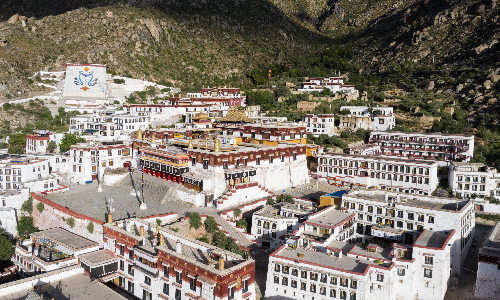
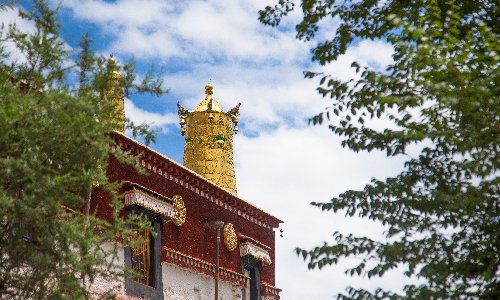
After having breakfast, you will visit the Potala Palace. The Potala Palace is known as a typical Tibetan architecture. It was built in 641 by Songtsan Gambo, the ruler of Tibet for his future bride, Princess Wencheng of the Tang Dynasty. It is a museum of art treasures that houses countless cultural and artistic works made of gold, silver, copper, jade, and porcelain. Potala Palace is built on a mountain and composed of the White Palace and the Red Palace. The White Palace used to be the place where the Tibetan government was located in. The most famous area of the White Palace is the square outside, which is used to hold large-scale performances. Every summer, Tibetan people gather here to show their talents by singing and dancing. If you pay some extra charge, you may have a chance to wear Tibetan costumes and take pictures in the square. Buddha statues and stupas are enshrined in the Red Palace. The remains of the Dalai Lama are completely preserved in the stupas after special treatment. The stupas are the most sacred places for Tibetan people because only the masters and religious leaders in Tibetan Buddhism can be preserved in stupas after death. The center of the Red Palace lies the throne of the Dalai Lama. There are many Buddhist statues in the Red Palace, which are well preserved and exquisitely made. It is a good place to learn about Tibetan Buddhism. While visiting, you need to remember that you are not allowed to take pictures in the palace.
After having lunch, you will visit Jokhang Temple which was built by Songtsan Gampo about 1300 years ago. It is the first Buddhist temple in Lhasa. Legend has it that because the whole terrain of Tibet is like a witch lying on her back, people were afraid it would be bad for the development of Tibet. Therefore, Songtsan Gampo decided to build a temple at the place of the witch’s heart so that the witch can be suppressed. However, the heart lies on a lake. So, more than 1,000 goats were used to carry the soil for filling the lake. And then the Jokhang Temple was built. Later, when Songtsan Gambo married Princess Wencheng, Princess Wencheng brought the twelve-year-old statue of Sakyamuni (the founder of Buddhism) and enshrined it in the temple. That makes the temple much holier.
When you enter the temple, you will first see a large courtyard where more than a dozen monks are chanting rhythmically. If you go further inside, you will see the main building of Jokhang Temple, the Main Assembly Hall. This four-story hall has the architectural style of the Tang Dynasty, and also absorbs the architectural features of Nepal and India. The first floor of the main hall is dedicated to the golden statue of Sakyamuni. The second floor is dedicated to the statues of Songtsan Gampo, Princess Wencheng, and Princess Chizun, another wife of Songtsan Gampo. The corridors and the halls in the temple are full of murals themed on Buddhist stories and historical figures. Jokhang Temple has a much higher status than the Potala Palace in the minds of Tibetan Buddhist believers because it is dedicated to the founder of Buddhism, Sakyamuni. Therefore, it is the destination for many pilgrims all over China even the world.
Then we will wander around Barkhor Street, which used to be a simple circular street centering on Jokhang Temple and now has expanded into a large block around the Jokhang Temple. This is a good choice to explore Tibetan folk customs and architecture. Tibetans usually walk clockwise, and it will be better for you to do like them according to their custom. Walking along the street, you will find a two-story building in North Street, which is the first house on this street. Before the Jokhang Temple was built, Songtsan Gambo built this building for himself. You will also find another special place in the southeast corner of Barkhor Street, that is Makye Ame restaurant. In Tibet, yellow represents the sacred religious color. Only temples or buildings where masters live can be used, while ordinary houses’ walls are mostly decorated in white. The Makye Ame restaurant covered with yellow decoration is said to be the place where the sixth Dalai Lama named Tsangyang Gyatso and his lover Makye Ame met with each other. Cangyang Gyatso is an outstanding religious spiritual leader in Tibetan history, as well as a brilliant romantic poet. His love story with Makye Ame attracts many tourists. When you see the restaurant, your guide will tell you more stories about it.
Apart from ancient stories and buildings, you can also buy some souvenirs while strolling. It is the most prosperous street in Lhasa, which gathers Tibetan products and handicrafts, such as traditional Tibetan clothing, Tibetan silver ornaments, and Tibetan carpets. Shops also offer religious articles for sale, such as bronze Buddha statues and prayer wheels, as well as local food like air-dried meat.

 Gyantse
Gyantse Shigatse
Shigatse Today, we will travel from Lhasa to Shigatse, a prefecture-level city of the Tibetan Autonomous Region of China. Shigatse is located southwest of Lhasa. The whole journey is around 300 kilometers and we will drive about 6 hours to get to Shigatse. The average altitude of Shigatse is above four kilometers.
After driving for about two hours southwest from Lhasa, we will meet one of the three holy lakes in Tibet, Yamdrok Lake. Every year, a large number of Buddhists spend a month riding around the lake as a devout pilgrimage. Driving along the highway, you will enjoy rolling mountains on your right side and Yamdrok Lake stretching for hundreds of kilometers on your left side. The lake is like a sapphire inlaid among a chain of mountains. The water source of the lake comes from the snow on the Himalayas, the highest mountain in the world, which lies between China and Nepal. From the map, some say that the lake is like the shape of a scorpion. We will pass by the lake and will stop there for a moment. You can enjoy the beautiful scenery and take some photos.
Continue driving, and we will visit the Karola Glacier, which is located southwest of Yamdrok Lake. The whole journey is about 90 kilometers and it will take about 2 hours. From Yamdrok Lake at an altitude of more than 4,000 meters, we will drive at a high altitude all the way. The area to the north of the Karola Glacier about 5,600 meters above sea level is a hanging glacier formed after the glacier drifts. Ice and snow melt along with the ice layer, forming a magnificent scenery of ice towers. Huge glaciers extend from the top of the mountain to the roadside only a few hundred meters away from the highway. This is the glacier closest to the highway in Tibet. Due to the influence of dust on the highway for many years, the glacier is black and white layered. In addition to the ice towers, there are rare ice bridges, ice cliffs, and dark ice fissures, which you may only see on TV.
The platform to watch the glacier is about 5,400 meters above sea level, so you need to climb hundreds of miles along the plank road. Because of the high altitude and freezing weather here, you need to wear heavy clothes like down jackets to keep warm. You may suffer altitude sickness while trying to climb the top, so you need to walk slowly and adjust your breathing. If you need the oxygen cylinder, your guide will prepare it for you in advance. It is worth noting that with the intensification of the greenhouse effect, the snow line of the Carola Glacier will move up a large distance every year. Whether the Carola Glacier will still exist in a few years is a very worrying question.
After visiting Karola Glacier, we will drive to Gyantse County, which belongs to Shigatse. After arriving in Gyantse, you will visit a significant Buddhist building, Palcho Monastery. The monastery is located in the northeast corner of Gyantse, with an altitude of 3,900 meters. It was built in 1427, the second year of Emperor Xuande in the Ming Dynasty, and completed in 10 years. The monastery includes three sects of Tibetan Buddhism. Main Assembly Hall, one of the main buildings in the monastery, is a three-story Tibetan building, with murals of different themes from the first floor to the third floor. Another main building is Bodhi Pagoda. This pagoda is nine-story high and has 108 doors. Entering each door, you will see vivid Buddhist statues and exquisite murals on the surrounding walls. There are more than 100,000 Buddha statues and nearly 1,000 murals in the pagoda. The mural paintings in the monastery are themed on different religious and historical stories and figures. These murals began to be drawn in 1418 and were finished after 20 years, which is representative of Tibetan painting art.
After visiting the Palcho Monastery, we will drive to Shigatse. You will spend the night in the local hotel and have a good rest.
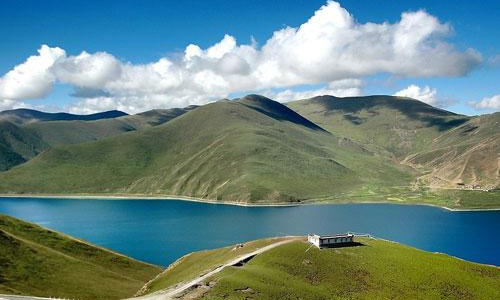
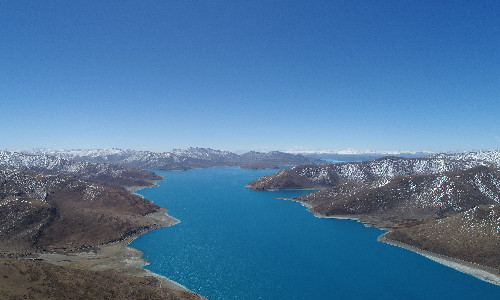
 Tingri
Tingri After breakfast, we will hang out in the Tashilunpo Monastery, one of the Six Great Monasteries of the Gelug sect of Buddhism in Tibet. It was founded in 1447 and was the residence of Banchan Lama who is regarded as the incarnation of Amita Buddha in the past. The monastery occupies nearly 300,000 square meters. The architectural layout of Tashilhunpo Monastery includes five palaces lining up from west to east on the mountain. After entering the monastery, you will visit the halls clockwise. Because all Tibetan Buddhist believers in Tibet walk around the mountains, pagodas, and temples clockwise and they also turn the prayer wheels clockwise. The most famous hall in the monastery is a typical Tibetan flat-topped palace and is dedicated to the Future Buddha. This statue of the Future Buddha is with a height of 26.2 meters. According to records, it took four years to finish casting this Buddha statue. More than 1,400 diamonds, pearls, ambers, corals, tremolites, and many other precious decorations are inlaid on the Buddha statue. To the east of the mountain lies the Sutra Chanting Hall and its affiliated halls. It is the earliest building of Tashilhunpo Monastery. It can accommodate over 3,000 monks. There is a historical throne of Panchen Lama in the center of the hall and many ancient murals on the surrounding walls. These murals are rare art treasures in that they are elegant in Buddha’s posture, vivid in the image, and bright in color. In front of the hall is a place for the Panchen Lama to lecture and monks to learn about the scriptures. There are other Buddhist halls behind the Sutra Chanting Hall, and you can walk around to explore Buddhist culture.
We will drive back to Lhasa this afternoon and rest in Lhasa’s local hotel.

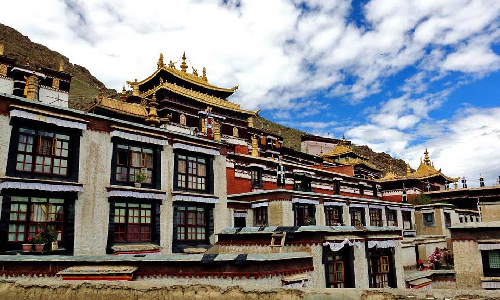
Your exploration tour to Tibet is going to end. After packing your luggage, you will be transferred to the Lhasa Gonggar Airport according to your schedule. We wish you will take back happy memories of your trip to China. A Chinese saying goes, “A good friend from afar brings a distant land closer.” We sincerely hope to see you in the future. If there is anything we can do to make it possible, please feel free to call us.
Author: Tianhua Liu
Proofreader: Betsy He
| City | Five Star hotel list | Four Star hotel list |
|---|---|---|
| Lhasa | Shangri-La Hotel, Lhasa | Thangka hotel |
| Shigatse | Guest House | Guest House |
| Tingri | Guest House | Guest House |
 |
![]() About your child or infant, please contact us for a discounted price.
About your child or infant, please contact us for a discounted price.



We started with a few days in Beijing & ended in Shanghai, from where we visited the Forbidden City and Great Wall. In between we visited Terra Cotta Warriors Museum, Panda Base, Shanghai Disneyland.

We had a wonderful holiday in China which will remain long in the memory. China is a breathtakingly beautiful country full of splendid temples and palaces, mountains and rivers, peaceful rural scenes and bustling shopping streets.
 QUICK ENQUIRY
QUICK ENQUIRY